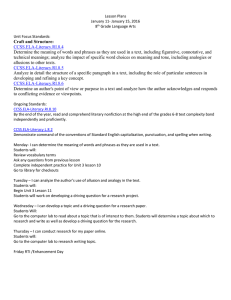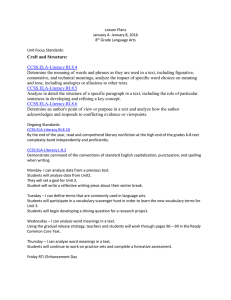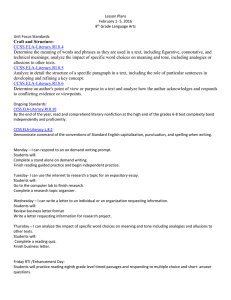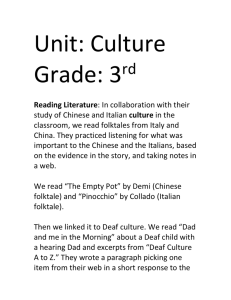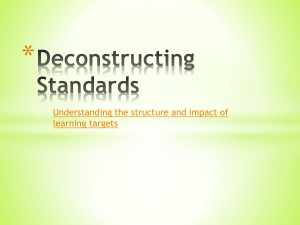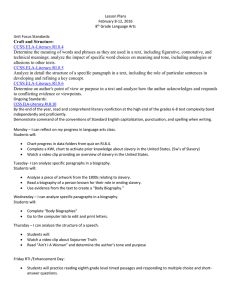Words Matter: A Closer Look at High-Yield Instructional Strategies
advertisement
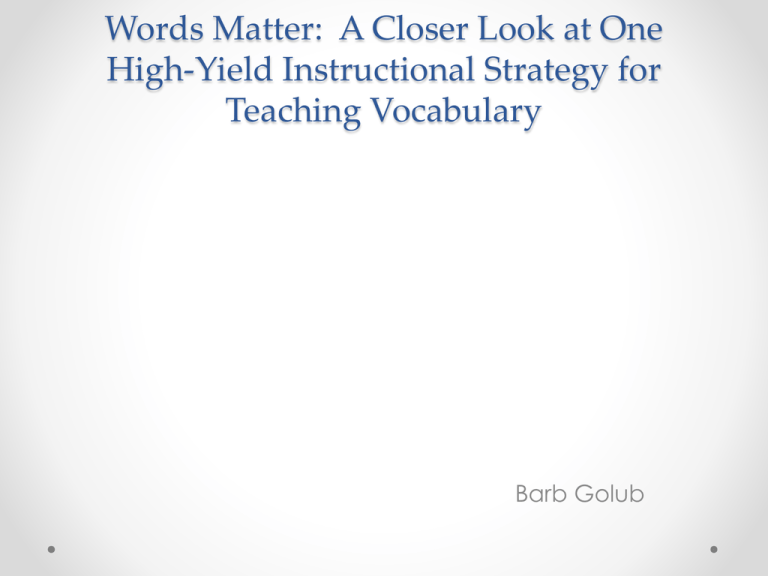
Words Matter: A Closer Look at One High-Yield Instructional Strategy for Teaching Vocabulary Barb Golub “Literacy draws on a number of levels of the language system, with these abilities encompassing vocabulary and as children learn to use language, they acquire a tool that enables them to regulate their own emotions and behaviors, with important consequences for their social and academic functioning.” -Dickinson, McCabe and Essex, 2011 Relationship between vocabulary and reading comprehension High-yield instructional strategies CCSS The CCSS Say: Kindergarten 11-12 Grade • Vocabulary Acquisition and Use • Vocabulary Acquisition and Use o CCSS.ELA-LITERACY.L.K.4 Determine or clarify the meaning of unknown and multiple-meaning words and phrases based on kindergarten reading and content. o CCSS.ELA-LITERACY.L.K.4.A Identify new meanings for familiar words and apply them accurately (e.g., knowing duck is a bird and learning the verb to duck). o CCSS.ELA-LITERACY.L.11-12.4.A Use context (e.g., the overall meaning of a sentence, paragraph, or text; a word's position or function in a sentence) as a clue to the meaning of a word or phrase. o CCSS.ELA-LITERACY.L.11-12.5.B Analyze nuances in the meaning of words with similar denotations. Current Approaches to Teaching Vocabulary • Word List • Genre • Tier Tier 3 Tier 2 Tier 1 The Reading Teacher, V67, Issue 5 Essential Words Valuable Words Accessible Words Imported Words Find Potentially Unfamiliar Words Identify Word Type Determine Optimal Type of Instruction Powerful Instruction • Provide a clear definition • Provide and discuss context sentences • Ask questions that require deep thinking Brief Explanation • Stop • Quickly provide a synonym or short definition and context sentence Infer Meaning • Words that have a useful context or easily identifiable word parts • Guide students to use what they’ve learned Read! Barb Golub barb.golub@gmail.com @GolubBarb


